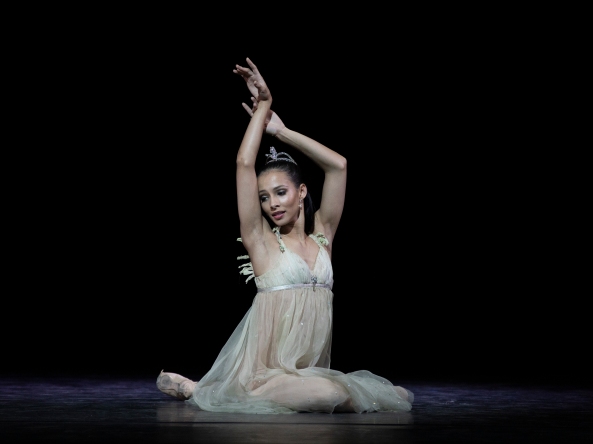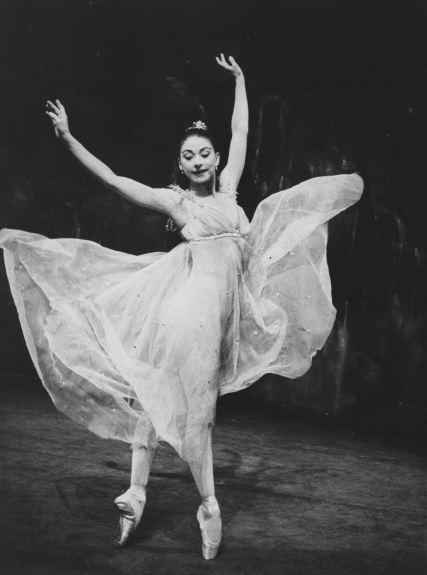In my tiny collection of CDs is an album entitled A Lasting Inspiration, a collection of Jacqueline du Pré recordings. It was probably a gift for my Father, a great admirer of the cellist’s. In the 1960s she became a household name, particularly in a family where every member played a musical instrument, we bought the The Great Musicians Weekly and were very happy to receive classical music LPs at Christmas and for birthdays. Listening to records was a regular family activity in the evenings and at weekends, as was watching the classical music quiz show Face the Music.
As well as CDs, I also own a few black vinyl records. Their now slightly tatty covers, the feel of the vinyl, the dust they attract and scratches they are prone to bring back memories of the 1960s and 1970s, the “golden age of record players” (“The History of the Record Player”). They also remind us of their power as a measure of the success of a musician, both within their lifetime and beyond.
In the opening scene of Cathy Marton’s The Cellist, based on the life of du Pré (frequently referred to as Jackie), dancers gradually bring black vinyl records on to the stage, roll them like wheels across the stage, hold them to their ears and swoop them through the air in circular pathways. The motion of the LPs draws us back into their era and their world of classical music.
Love
“To love at all is to be vulnerable. Love anything and your heart will be wrung and possibly broken.” (Lewis 147)
As is the case in so many ballets, love features as a major theme in The Cellist. In fact, Marston herself describes her ballet as a “story of love and loss” (qtd. in Alberge). Although romantic love is the central concern of so many works, we are accustomed to the portrayal of other types of love in ballet: parental love (Giselle), filial affection (La Fille mal gardée), the love between siblings (A Winter’s Dream), the loyalty of friendship (Le Corsaire), the bond between a teenager and her nurse (Romeo and Juliet), the mature love between husband and wife (Onegin). In The Cellist too parental love is notable, as well as the intense passion that is ignited between Jackie and the pianist and conductor Daniel Barenboim. A more unusual type of love also emerges through the intermittent return to the stage of the records, tenderly handled by her fans. And this is inextricably bound to the great love at the heart of Marston’s ballet: du Pré’s lifelong love of music, and in concrete terms, her cello: not for nothing does Jenny Gilbert title her review “A grand love affair with a cello”.
Du Pré was celebrated for the passion of her playing. The 1967 video recording of Edward Elgar’s Cello Concerto in E Minor, (“Jacqueline du Pre & Daniel Barenboim Elgar Cello Concerto”), the musical composition most closely associated with her, shows her wrapping herself around her cello, gazing lovingly at its neck, and characteristically swaying from side to side, tossing her long golden hair back from time to time. The concerto ends with a triumphant flourish, immediately followed by a rhapsodic smile directed straight at her conductor Barenboim, conveying a palpable feeling of elation from the music they have just created together.
Adrian Curtin from Exeter University argues that du Pré’s “physical abandon” meant that “Her appeal derived not only from the sound of her playing; the sight of her playing was also an important element” (144). Given the significance of her physical style for audiences and the visibility of her deep and intense love for music, what better way to express this love in choreography than to cast a dancer as the Cello.
This decision was without a doubt a daring move on Marston’s part, although it is also a natural development in her choreographic style: dancers represent objects in Jane Eyre (2016), The Suit (2018) and Victoria (2019). Du Pré’s 1673 Stradivarius, however, is presented as an altogether more sentient being, and is of course, along with Jackie, the main protagonist. Not only did Marston want to explore the relationship between a human being and an object, but she wanted to investigate how the spirit of music represented by the Cello would feel looking back on its relationship with the musician (qtd. in Nepilova).
Given the sensuous nature of her choreography (think of the duets in Jane Eyre, The Suit and Victoria), Marston is the ideal choreographer to portray the vibrantly physical performer and her instrument. As Jackie and her Cello dance together they revolve around the stage, swirling, swooping, tumbling as one, only occasionally pausing for the Cello to admire the Cellist’s charismatic playing. Skimming across the stage together they bring to mind the notion of du Pré’s “close identification with the cello, as though performer and instrument were one” (Curtin 148). Once Barenboim is in the picture, Marston creates an exquisite metaphor for the bond between the three of them, as Jackie and her Cello rock forwards and backwards in a series of luscious, rapturous arabesques penchés and developpés devant, supported by Barenboim in the middle.
The magnificent climax to the ballet is in the form of the Elgar concert conducted by Barenboim, Jackie’s soon-to-be husband.
It is clear from the ebullience of Jackie’s behaviour that she has no idea how vulnerable her all-consuming love for her Cello has made her.

Loss
“A single person is missing for you, and the whole world is empty.” (Didion 192)
Jackie stands with her Cello in front of an audience, poised and ready to perform. But no music is forthcoming. She is paralysed by the uncontrollable trembling of her right hand caused by the Multiple Sclerosis from which she is now suffering. The audience departs at the bidding of Barenboim.
Standing alone in front of her expectant audience, sitting alone desperate to come to terms with the disease, lying on the floor alone in despair, her world is empty. The Cello attempts to comfort her, repeating the embrace in which he initially held the Young Jackie. He tries to lift the ailing Adult Jackie in the same pose, holding his hands to her ears. But the movement that gave her life as a child she now rejects.
In his terse assessment of the situation, Adrian Curtin encapsulates its sheer brutality: du Pré “a musician known for her physical abandon was abandoned, as it were, by her own body” (148). The single missing “person” that makes her world empty is not the Cello itself, but her ability to make music with the Cello. As the Cello tries to repeat the rocking penché and developpé motion from the pas de trois with Barenboim, Jackie flounders, unable to execute the movements that once brought them both such joy.
Sitting alone in her chair, Jackie’s world looks empty.
Resolution
And yet, her world isn’t quite empty.
Led by the Young Jackie, The Cellist comes to a quiet, but not silent, close with the return of the main characters to the stage. As the Cello slowly circles the space, he seems to be spinning the fabric of the ailing Jackie’s memories together. A dancer rolls a single LP across the stage once more. The LP is handed to the Young Jackie, a symbol of her lifelong love of music, her success and renown that survived her illness and death, and her extraordinary gift that is celebrated to this day. As our own memories of du Pré and her world have been rekindled, we are reminded that the past leaves behind traces, including glorious recordings of her work on vinyl, on CD and online in the form of television documentaries and recordings, as well as audio recordings.

In this cyclical structure, with its recollections of love and success and assurance that not all has been lost, lies resolution, even hope perhaps, as implied by Jenny Gilbert’s insightful closing remarks on the work: “Ultimately, the tone of The Cellist is celebratory, underlined by a closing image of Sambé slowly and dreamingly spinning like a vinyl LP”.
Undoubtedly Jacqueline du Pré will continue to be a “lasting inspiration” to lovers of classical music, “the music she made resonating onward, etched in the memories of those who heard her and the recordings she left behind” (Kemp). And in her new ballet The Cellist Cathy Marston has incalculably enriched our understanding of du Pré in the most poignant and inspirational way.
© British Ballet Now & Then, 2020
Dedicated to my Dad, Paul Gerhard
References
Alberge, Dalya. “Jacqueline Du Pré’s life inspires new Royal Ballet production”. The Guardian, 12 Jan. 2020, https://www.theguardian.com/stage/2020/jan/12/jacqueline-du-pre-life-loves-and-ms-inspire-royal-ballet-production. Accessed 11 Mar. 2020.
Curtin, Adrian. “‘O body swayed to music’: The allure of Jacqueline du Pré as spectacle and drama”. Studies in Musical Theatre, vol. 9, no. 2, June 2015, pp. 143-59, Intellect, doi:10.1386/smt.9.2.143_1.
Didion, Joan. The Year of Magical Thinking. Harper Perennial, 2006.
Gilbert, Jenny. “The Cellist/Dances at a Gathering, Royal Ballet Review – A grand love affair with a cello”. The Arts Desk, 19 Feb. 2020, https://www.theartsdesk.com/dance/cellistdances-gathering-royal-ballet-review-grand-love-affair-cello. Accessed 6 Mar. 2020
“The History of the Record Player”. Electrohome, 2020. Accessed 23 Feb. 2020.
“Jacqueline du Pre & Daniel Barenboim Elgar Cello Concerto”. YouTube, 9 May 2016, https://www.youtube.com/watch?v=OPhkZW_jwc0. Accessed 1 Feb. 2020.
Kemp, Edward. “The Cellist”. Dances at a Gathering / The Cellist. Programme. Royal Opera House, 2020, p. 25.
Lewis, C. S. The Four Loves. William Collins, 2016.
Nepilova, Hannah. “New ballet ‘The Cellist’ explores Jacqueline du Pré’s life in dance”. Financial Times, 7 Feb. 2020, https://www.ft.com/content/899320c2-4696-11ea-aee2-9ddbdc86190d. Accessed 14 Feb. 2020.







